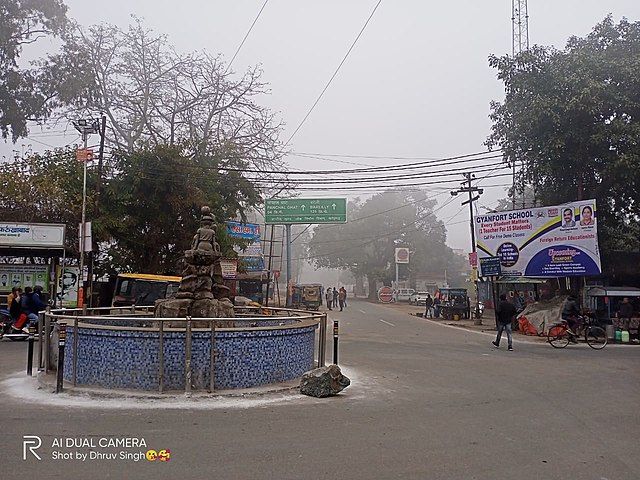Zardozi, or zar-douzi or zarduzi, is an Iranian, Indian-subcontinent and Central Asian embroidery type. Zardozi comes from two Persian words: zar or zarin meaning 'gold', and dozi meaning 'sewing'. Zardozi is a type of heavy and elaborate metal embroidery on a silk, satin, or velvet fabric base. Zardozi embroidery uses a wide variety of gold and silver embellishments such as: flat metal wires, spangles, coiled wires, heavy wires, and twisted wires. Designs are often created using gold and silver threads and can incorporate pearls, beads, and precious stones. It is used as decoration for a wide range of applications, including clothes, household textiles, and animal trappings. Historically, it was used to adorn the walls of royal tents, scabbards, wall hangings and the paraphernalia of regal elephants and horses.
Close-up shoot of zardozi (zardouzi) embroidery
Vicereine Lady Curzon's peacock dress, with a skirt made of Indian zardozi needlework featuring green beetle wings and gold and silver thread, was a sensation at her coronation, making the front page of the Chicago Tribune on 27 September 1903.
Drawing of Delhi gold embroiderers at work in 1870, by John Lockwood Kipling
Farrukhabad is a city in the Indian state of Uttar Pradesh. It is the administrative headquarters of the Farrukhabad tehsil. This city is on the banks of river Ganges is 295 kilometres (183 mi) from the national capital Delhi and 210 kilometres (130 mi) from the state capital Lucknow.
Tomb of Nawab Muhammad Khan Bangash
Chauraha showing directions to Panchal ghat





